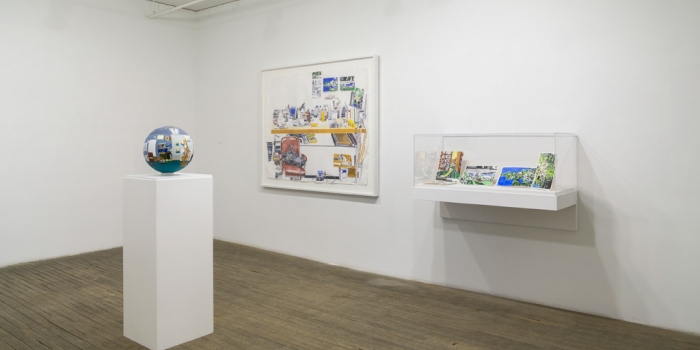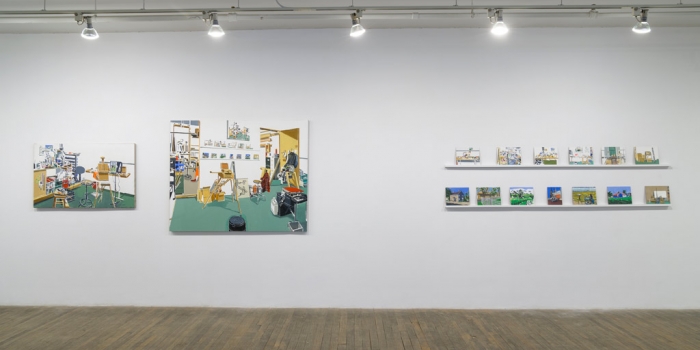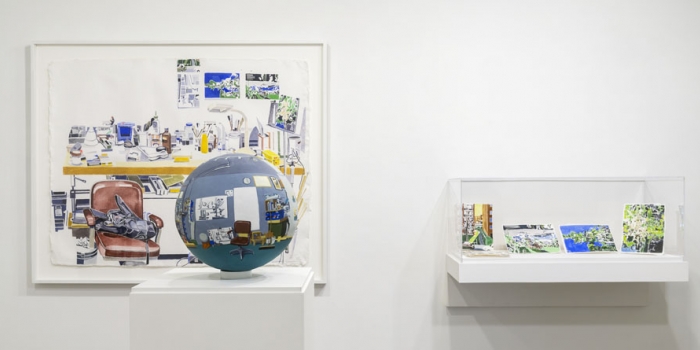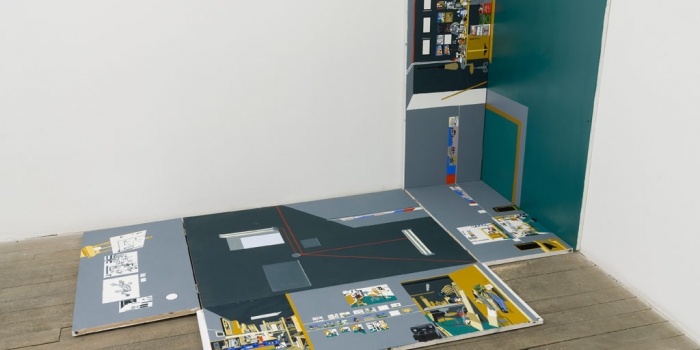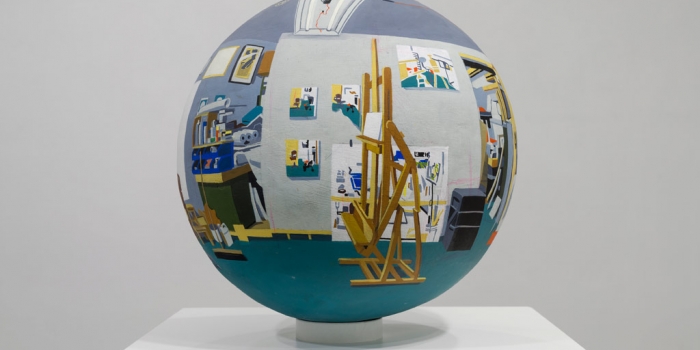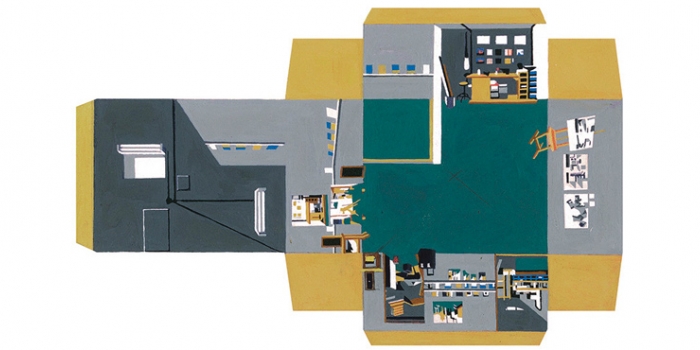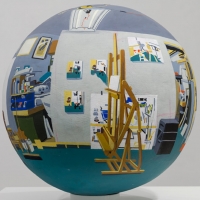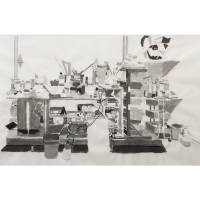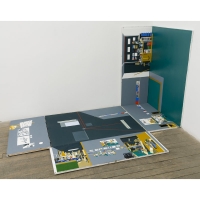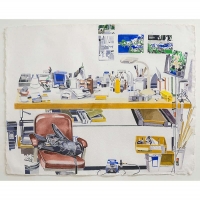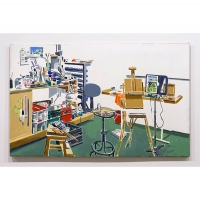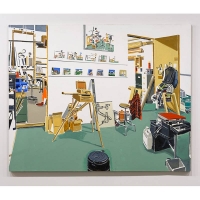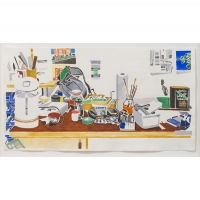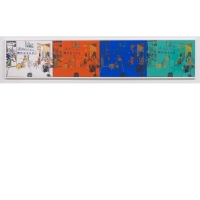A garage, 45’ × 25’×10’, there is a 1964 Ford Thunderbird being restored in the corner. The walls are brick and the floor is cement tilted toward the drain. The ceiling has been insulated and drywalled, but water has infiltrated the roof and some of the drywall has collapsed. There is a table with chocolate bar wrappers on it and an empty coke can. There is a red engine hoist, tools and some dirty rags. This is the first time I see my studio.
I spend six months insulating, drywalling, painting, installing skylights and a proper door. I start working. I have been working here for the last 15 years.
Robert Smithson invoked Cézanne directly when describing the necessity of moving out of the studio and into the world to make his site-specific land art. “We now have to reintroduce a kind of physicality,” he insisted in an interview, “the actual place rather than the tendency to decoration which is a studio thing.”
In 2012 I visit Spiral Jetty, Sun Tunnels, Double Negative, The Lightning Field and Marfa, Texas. I attempt to paint each of these sites in situ. It is impossible. Over the next four years I struggle with questions related to the experience of these works. The removal of a frame is profound. I am no longer looking through a lens, I am surrounded. I become more interested in working from life with the negotiation of reality: flux, wind, bugs, rain, sun, cold, etc. The experience necessitates an efficient and economical form of shorthand that replaces polish with rawness to convey this experience. The work becomes more material oriented. Each mark is a step into thin air. What is unstated becomes as important as what is.
I approach my environment with the same spirit. I paint the studio as a subject, initially as an exercise for plein-air painting. But I have inadvertently taken Robert Smithson’s statement from above, and reversed it. My studio is in the world.
The studio is a constant subject for artists: Matisse, Braque, Bruce Nauman, Paul McCarthy, Louise Bourgeois, Philip Guston, Courbet, Brancusi and more. It is an incubator, matrix or a “centre of creation.” The exhibition draws a line from the studio to the gallery.

